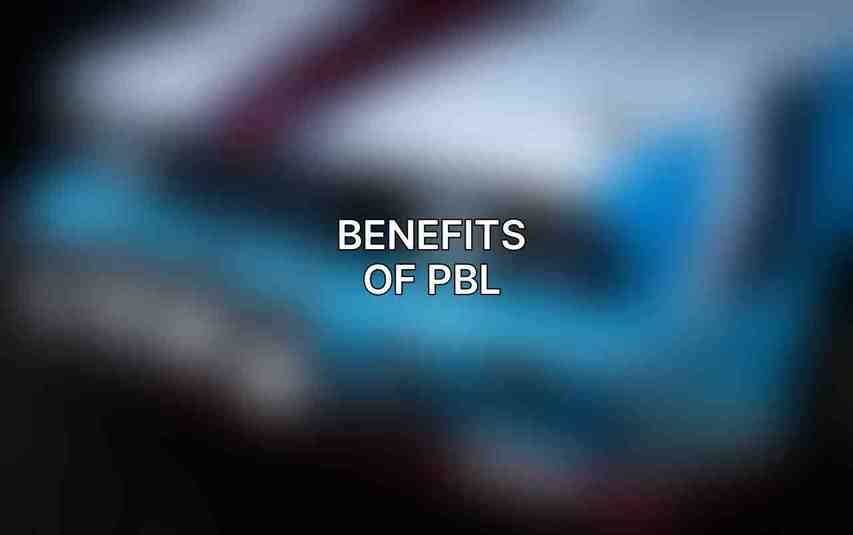Project-Based Learning (PBL) is an educational approach that emphasizes learning through active exploration and hands-on projects. It involves students working on real-world problems and challenges, leading to deeper understanding and application of knowledge. PBL focuses on “learning by doing” rather than passively receiving information.
Definition and Overview
What is PBL? Find out about Top Tools and Resources for Effective Project-Based Learning
- PBL is a teaching method where students gain knowledge and skills by investigating and responding to complex questions or problems.
- It involves sustained inquiry, collaboration, and reflection throughout the project.
Key principles and characteristics
- Authenticity: Projects are meaningful and relevant to students’ lives.
- Sustained Inquiry: Students engage in extended exploration of a topic or issue.
- Reflection: Opportunities for students to review and evaluate their own learning.
Importance of PBL in Education

- Fostering critical thinking and problem-solving skills:
- PBL encourages students to think critically, analyze information, and develop solutions to real-world problems.
- Enhancing student engagement and motivation:
- By actively participating in projects, students become more engaged in learning and are motivated to achieve meaningful outcomes.
- Developing real-world knowledge and skills:
- PBL helps students apply academic concepts to practical situations, preparing them for future careers and challenges.
Benefits of PBL

- Improved academic achievement:
- Research shows that students engaged in PBL demonstrate higher academic performance.
- Increased creativity and innovation:
- PBL fosters creativity by allowing students to explore diverse solutions to problems.
- Enhanced collaboration and communication skills:
- Through group projects, students learn to work effectively in teams and communicate their ideas clearly.
- Greater self-confidence and autonomy:
- PBL empowers students to take ownership of their learning, leading to increased self-confidence and independence.
Implementation of PBL
Successfully implementing PBL requires careful planning, project design, and continuous monitoring of student progress.
Planning and Preparation
- Defining learning objectives and goals:
- Clearly specify what students are expected to learn and achieve through the project.
- Selecting appropriate projects:
- Choose projects that align with curriculum standards and provide meaningful learning opportunities.
- Gathering necessary resources:
- Ensure access to materials, technology, and support needed for the project’s completion.
Project Design
- Structuring the project:
- Break down the project into manageable tasks, outlining the steps students need to take.
- Identifying roles and responsibilities:
- Assign specific roles within the group to distribute tasks and promote collaboration.
- Setting timelines and guidelines:
- Establish clear deadlines and guidelines to keep students on track and accountable for their work.
Implementation and Monitoring
- Facilitating student learning:
- Guide students through the project, providing support, resources, and opportunities for reflection.
- Providing feedback and support:
- Offer feedback on student progress, addressing misconceptions, and encouraging growth.
- Assessing student progress:
- Monitor student performance throughout the project to identify areas of strength and areas for improvement.
Stay tuned for the continuation…
Frequently Asked Questions
What is project-based learning?
Project-based learning (PBL) is a teaching method in which students gain knowledge and skills by working for an extended period of time to investigate and respond to an authentic, engaging, and complex question, problem, or challenge.
How is project-based learning different from traditional learning methods?
Project-based learning encourages students to explore real-world problems and challenges, work collaboratively, think critically, and solve problems creatively, whereas traditional learning methods typically involve lectures, tests, and individual assignments.
What are the benefits of project-based learning?
Some benefits of project-based learning include increased engagement and motivation, development of critical thinking and problem-solving skills, improved collaboration and communication skills, and better retention of knowledge.
How can teachers implement project-based learning in their classrooms?
Teachers can implement project-based learning by selecting an engaging and relevant topic, providing students with clear guidelines and expectations, offering support and resources, and assessing student learning through presentations, exhibitions, or portfolios.
Are there any examples of successful project-based learning projects?
Yes, there are numerous examples of successful project-based learning projects, such as designing a sustainable garden, creating a documentary film on social issues, developing a marketing campaign for a local business, and building a solar-powered vehicle. See our take on Guide to Implementing Project-Based Learning in Remote Environments

